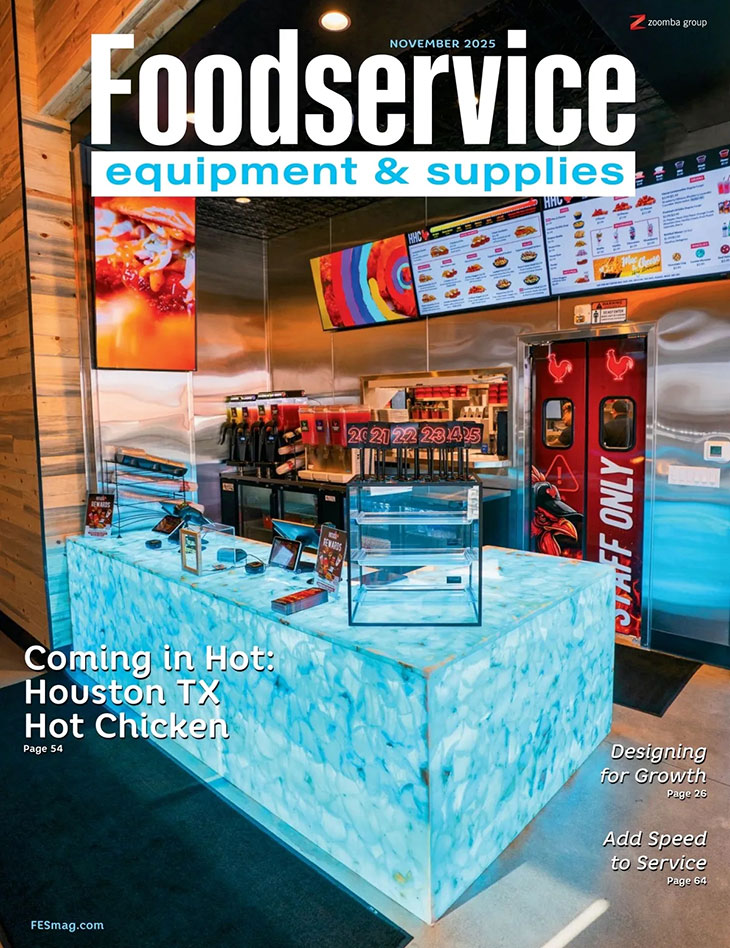There’s lots of sober news surrounding COVID-19 and its impact on individuals, communities and even businesses. Few businesses have taken as direct a hit from COVID-19 as the foodservice industry.
Today’s college students demand bold, unique flavors in their dining choices. But real estate remains at a premium at many smaller universities, which impacts how much space operators can dedicate to foodservice. To provide those flavors in a condensed space, Sodexo developed CRU5H (pronounced “crush”). This food and drink concept combines the variety one would expect to find in a food court into one unique brand.
As the coronavirus crisis evolves on a market by market basis, consumer sentiment toward restaurants and other forms of food prepared outside of the home continues to shift. In doing so, the short-term challenges the industry faces continue to come into sharper focus.
How does a forest management major with no culinary education become a chef working in some of the top fine-dining restaurants in a major city? Jack Mazzacavallo will tell you it comes from having an open mind, a knack for the trade and a deep desire to learn.
Few people would argue that technology has had the greatest impact on the restaurant industry over the past 10 years. That’s because technology is a major part of everyone’s lives, food included. Technology helps put information at your fingertips quickly and facilitates fast transactions. As a result, instead of a restaurant visit being about the food and the experience, today it’s a picture and a post and just another evening out.
Without question, just about every type of business feels the effects from COVID-19 but for various reasons restaurants remain front and center in this conversation. Maybe it’s because most of us would like to go to the corner bar to drown our sorrows over the new coronavirus with a drink. Or perhaps it’s because people often use restaurants as a gathering place to bring friends and family together to share a meal and a laugh during challenging times like these. Right now, that’s not an option.
I’m in my 43rd year in the foodservice industry, and earlier this year I had the opportunity to reflect on how much equipment and supplies distribution has changed over those four-plus decades. When my father owned a dealership in New England, most operators within our geographic area bought their foodservice equipment and supplies from him. At the time, the only other option was to head off to Boston or New York.
Stacey Guerin jumped into foodservice equipment supplies sales in 2011 when the former owner of R.M. Flagg Restaurant Equipment approached her husband, who was an employee there at the time, about buying the business. It was an opportunity the couple had always wanted — to own their own business. The shift from teacher and stay-at-home mom was a good fit for Guerin, who has always been fond of the food and hospitality industry. The equipment dealer now supplies thousands of clients in Maine, from restaurants to schools, nursing facilities, c-stores and more.
It’s hard to contain our excitement here at FE&S as we begin a new year and embark on our second decade as Zoomba Group. We have so much planned for 2020, and all of it is designed to make you the best-informed foodservice professional in the equipment and supplies industry.
As roles change and projects get more and more complicated with faster-than-ever timelines, maintaining good project management skills become critical, whether you are the project manager or are working with one. 3.14DC, an offshoot of my consulting and design firm Dynamikspace, specifically handles foodservice project management for companies.
It’s no longer the cost of labor alone that keeps foodservice operators awake at night. It’s also the fact that labor has become a scarce commodity. These factors have foodservice operators continually exploring ways to better manage this part of their business. For multiunit operators, though, the challenge grows exponentially as they try to properly manage labor across a portfolio of similar, yet not identical, locations.
This marks the 11th year that Zoomba Group will hold FE&S’ Dealer of the Year and All Industry Awards Gala on the Saturday night of the National Restaurant Association Show in Chicago. As in years past, this highly sought-after ticket opens the door to a carefully curated night that includes a ton of fun packed into a quick-paced event. Also on the menu that night: plenty of laughs, smiles and maybe even a few tears.
Producing drawings is an important part of a foodservice designer’s work and computer drafting programs have certainly streamlined the process. While they can make drawings more accurate, these drafting programs cannot eliminate every potential error. For that reason, I’m a firm believer in the use of checklists as part of the quality control process to help catch potential problems.
There’s a very human part of wanting to give back as you become successful. Why not give back to the industry that is making your company successful?
For many years now, I’ve been telling you just how wrong I’ve been about predicting the eminent demise of printed directories.
Looking back at the past five years in the foodservice industry, no one factor has had a bigger influence than the rapid evolution of technology in this space. From the way consumers order their meals to the way operators purchase their equipment and supplies, the tentacles of technology continue to affect all aspects of foodservice in new and different ways.
I love the hospitality industry because I think it attracts the best people.
Cherry Hearn was recently promoted to president of Which Wich, a Dallas-based sandwich chain. Her long track record with Which Wich began with her role as outside legal counsel, back when Which Wich had only three units. She also was one of Which Wich’s first franchisees, opening the concept’s eighth location and eventually two more locations. She went on to sell those locations back to another franchisee and joined the company as in-house corporate legal, a position she held for the past seven years.



